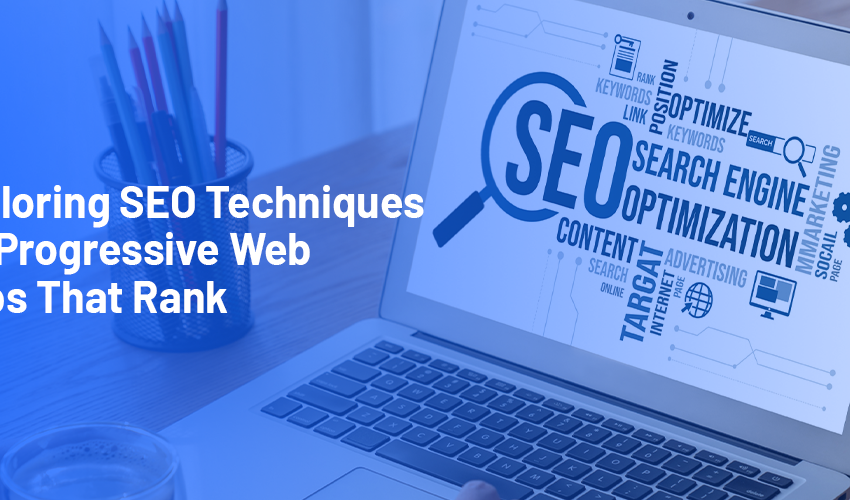Exploring SEO Techniques for Progressive Web Apps That Rank
Progressive web apps (PWA) are surging as businesses expand their reach across borders. PWAs are a an attractive way to keep users hooked to a service without getting them to install native apps for your brand. SEO for Progressive Web Apps (PWAs) is changing how we build a brand on the web. Faster load times, offline capabilities, and app-like interfaces are just the beginning. But none of those features matter if your users can’t find you. If your content is not showing up in search, it’s like hosting a party without sending invites. Let’s explore how to make sure your PWA does not just perform, but gets discovered.
Why SEO Optimization is a Non-Negotiable for PWAs
PWAs often depend heavily on JavaScript, which means search engines sometimes struggle to understand them. If crawlers can’t see your content or follow your site’s structure, you’re likely losing out on valuable organic traffic. SEO for Progressive Web Apps is essential for visibility, conversions, and long-term growth rather than being considered a luxury.
Search engines are smarter than ever, but they’re still limited when it comes to dynamically loaded content. Understanding those limitations and designing with them in mind can mean the difference between showing up on page one or being invisible. Here are some doables that you need to ensure while implementing PWAs:
-
Structuring Your PWA to Be Search-Engine Friendly
To ensure your PWA is easily indexed, it has to be readable and structured in a way that both users and search engines can navigate.
-
Build with Clear, Accessible URLs
Search engines love clean URLs. Avoid hash-based routing like contact and instead opt for well-structured, path-based routes like /contact. Each page should be clickable and load independently.
-
Enable Server-Side or Static Rendering
PWAs built entirely on client-side frameworks may render blank pages for search bots. Frameworks such as Next.js or Nuxt.js allow server-side or pre-rendered content, which ensures that search bots can see the same content as users.
-
Limit Overuse of App Shells
While app shells are great for user experience, they often result in empty or generic content from the crawler’s perspective. Ensure each route has meaningful, loadable content embedded in the HTML.
Case Studies: Companies Who Nailed Discoverable PWAs
Starbucks: Low Bandwidth, High Visibility
Starbucks’ PWA is built for the brand’s high visibility, which helps to perform exceptionally well even when offline. Their developers focused on accessible navigation, proper metadata, and structured routing, resulting in a 2x increase in daily active users and enhanced search presence.
Flipkart Lite: Performance Meets Ranking
With Flipkart Lite, Flipkart showed that speed and SEO can go hand in hand. By using dynamic rendering tools and structured data, they ensured the app loads fast for users and is easily crawlable by Googlebot.
Pinterest: Learning from Early Mistakes
Pinterest initially struggled with SEO due to over-reliance on client-side rendering. After switching to server-side rendering, their search engine traffic saw a 40% boost, which proves that optimising for discoverability has a direct business impact.
Essential Technical Steps to Boost SEO for Your PWA
To unlock search visibility, you need an SEO-forward architecture rather than a good design.
- Keep Content Consistent for Bots and Users: Cloaking (showing bots different content than users) is a red flag for search engines. Use server-side rendering or tools like Rendertron to serve the same HTML content to both users and bots.
- Use Canonical URLs and Metadata Wisely: Duplicate content is a major issue for PWAs with dynamic routing. Define canonical URLs for every unique page and include descriptive titles, meta descriptions, and Open Graph tags to enhance indexing.
- Add Schema Markup: Use JSON-LD structured data to help Google understand your app’s content. Whether it’s articles, products, or events, schema.org data improves your chances of appearing in rich search results.
- Run Regular SEO Audits: Use tools like Google’s URL Inspection Tool and Mobile-Friendly Test to see how bots view your PWA. Also, run Lighthouse audits to identify technical barriers to crawlability.
How Untitled10 Helps You Build PWAs That Get Found
At Untitled10, we build beautiful and functional PWAs while ensuring they’re visible where it matters. Our team implements smart rendering strategies, metadata best practices, and structured data so that your content is discoverable by both users and search engines.
Let’s take your SEO for Progressive Web Apps beyond technical excellence by making it visible, searchable, and unforgettable. Untitled10 is your partner in building digital experiences that work on every device and in every search.
Frequently Asked Questions
Is SEO different for Progressive Web Apps than traditional websites?
Yes, PWAs need special attention due to their JavaScript-heavy structure. Techniques like server-side rendering and structured data are crucial to ensure search engines can index your content properly.
What’s the biggest mistake people make with PWA SEO?
The most common mistake is relying entirely on client-side rendering without fallback content for bots. This often leads to blank or incomplete pages in search engine indexes.
Can I fix my PWA’s SEO after launch?
Absolutely. Implementing SSR, cleaning up URLs, and improving metadata can all be done post-launch. SEO for PWAs is an ongoing process, and it’s never too late to improve.





